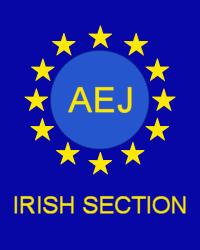Climate change poses one of the greatest challenges facing the world and our shared future. The need to combat the devastating effects it has on our environment, society and economy is urgent.
We are now seeing a significant call to action, especially here in Ireland, to introduce new measures and practical solutions to help combat climate change and transition to a low-carbon, climate-resilient and environmentally sustainable economy.
The Government released a new Climate Action Plan in October 2021, which sets out a course of action to reduce Ireland’s greenhouse gas emissions and make Ireland carbon neutral by 2050. As part of the Plan, the government has committed to increasing our generation of electricity from renewable sources. We need to increase this proportion to up to 80 per cent by 2030 to meet the set targets. To achieve this, we must switch from fossil fuels to renewable energy sources such as wind energy. One of our first milestones is to reach 5GW of offshore renewable energy.
The use of wind turbines to generate electricity in Ireland was first introduced with the commission of first commercial wind farm in Bellacorrick, County Mayo in 1992. Since then, significant progress in technology, policy, and legislation has laid the ground for Ireland to become one of the leading producers of wind energy in Europe. With Ireland’s maritime area seven times the size of its landmass and our location at the edge of the Atlantic Ocean, the potential for offshore wind energy is enormous.
Until recently, much of this offshore capacity was out of our reach as no legislative basis existed to regulate the use of our maritime area outside the 12 nautical mile coastal zone provided for in the Foreshore Act (1933). However, with the enactment of the Marine Area Planning (MAP) Bill last December, we not only have a legislative basis to harness this untapped potential, but also to manage and protect our maritime area. The comprehensive and coherent marine planning regime laid out in the MAP Act also provides clarity to developers on the offshore wind consenting system for developments in our maritime area.
Extensive work is being carried out elsewhere to facilitate the sustainable development of offshore renewable energy (ORE) in Ireland. Both EirGrid and the Commission for Regulation of Utilities are implementing actions to ensure the electricity grid can support the planned offshore capacity. The recently published Port Policy Statement sets out a multiport approach to the roll-out of the ORE industry in Ireland and will be instrumental in increasing flexibility, reducing costs and delays and de-risking the construction phase of ORE projects.
The development of the offshore sector will also generate job opportunities in coastal areas and provide supply chain opportunities for local SMEs. Meanwhile, work is proceeding on a new Offshore Renewable Energy Development Plan (OREDP II) to identify areas most suitable for post-2030 deployment of wind, wave, and tidal technologies, while considering the need to protect marine biodiversity.
The establishment of offshore wind in Ireland is a significant undertaking, involving action across many areas of government. Work is well underway to deliver significant benefits not only in the short term, but also in securing our future for generations to come.
Thinking big on the climate side is also transformational on the economic side. It is the biggest economic opportunity that our State has ever seen because we happen to live with a sea area seven times our land area in the windiest place on the planet. We can convert that energy into hydrogen, into ammonia, and into electricity which would power industry into the future. That’s the best, most secure guarantee of a balanced budget in the decades to come. That will give us the power to run digital industries that are going to be a future employer in this country. It gives us the ability to actually develop the periphery – to develop the west, the north-west, the south-west, east – not just our cities but right across the country.
And it is not going to be easy. Public support and getting the planning right and getting the investment conditions right is going to be really challenging but I don’t see anything that should stop us. And in transitions in the past – the one we did in the late 50s/early 60s moving from being a closed economy to an open economy – the one we did getting out of the economic crisis in the late 80s – and I would argue the financial crash of 2009-10 – in all three occasions in my living memory, just about, we have done it well when we worked together, when we listened to each other and came together and actually realised it is employers and unions and the social pillar and the environmental pillar working together. That’s why I believe in this economic dialogue process – in our social partnership process – and in why I enjoy working with all the parties in the Dáil and particularly with our government colleagues to make it happen.


